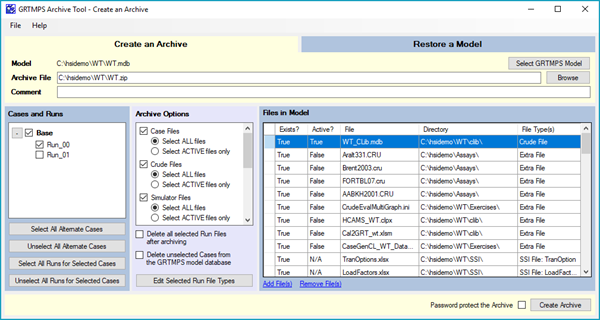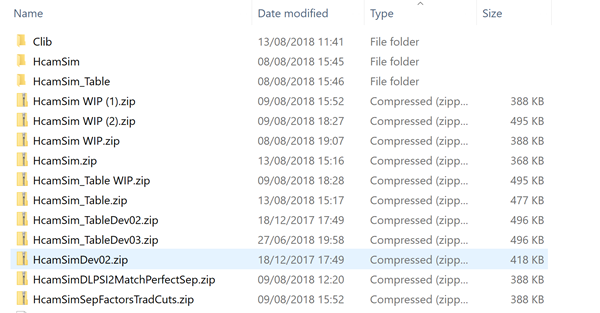| Are you paranoid enough about backing up your work? How many hours would you lose if your computer didn’t boot or if that core document, spreadsheet or database you have just spent a week on was corrupted? My family tease me because I won’t shut my laptop down without backing up what I have been working on, in case it won’t start again. But over the many years I have worked on computers, this has happened to me more than once – and there was also the memorable occasion back when I was working at BP when Roger Main and I arrived to find that our dedicated high-powered desktop had been stolen. Not forgetting as well the occasions where attempting to insert one last table in Word has scrambled all the auto-numbering, or I’ve started implementing some elaborate control structure in a model only to realize that I’ve deleted at least one thing too many. Our back up habits have to both make us resilient to losing access to a file in its normal location and give us access to previous versions when things are corrupted. |  |
These days most companies will operate some sort of automatic back up system and you may have disk mirroring or similar running in the background, but could you actually rely on it to get you quickly back to where you need to be? My laptops are regularly scanned and the files backed up on to a server, somewhere in the cloud, at regular intervals when I am on-line. If I lost the whole machine, this would provide a good basis for starting up again – but I would have to wait for someone else (in a different time zone) to retrieve and re-install for me. There is no guarantee that I would have the very latest versions of everything, particularly if I have been travelling. For work in progress I want back-ups that I control. When I am working on the laptop, I copy things to our network drive, in case the hard drive fails. Working on the servers, I copy down to my laptop, in case I lose network access. Working on a plane, I copy things to a pen-drive. I always have at least two copies of everything on two different devices, preferably ones in different physical locations. (In case, for example, there is a fire and you can’t get to the office.)
How often to make a copy? Doing these blog notes or presentations, I save every time I finish a bit of writing (Alt F S). I close the editor and copy the latest draft to the server at lunch time and the end of the day, or when I finish or when I do something I would particularly hate to have to repeat. When I work on GRTMPS models, I use the archive tool to take snapshots of the model as I work.

Edit it – Run it – Archive it. So, whenever I have been successful with something, I have it as a restore point. I copy the archive onto the server every couple of hours and at the end of the day so I have off-site backup too.
When I am working on significant changes to a model (or upgrading a PC, or re-formatting a big document etc.) I also always try to think about my escape route. How will I return to where I started if something goes wrong? Its important to do only a little at a time, so if you have to go back, it isn’t very far. I always start by checking that I am starting from a working case and use the SSI system to dump data into a spreadsheet before starting. (If working with table based data, I try to test changes in DATA,MODIFY files, so I'm not editing the originals until I am sure I have it right.) I try to break work up into independent pieces and validate each as I go along. For example, on adding a new process unit, put in the yield structure first – then the utilities and then the controls If you are adding more periods, do one at a time. Using different run names and / or alternate cases for each change and keeping the RC2 or MODEL$ files gives you something to compare if you break it and need to work out what went wrong. (There are useful compare tools in g5 and in MS Office.)
You should also aim to keep the model running optimal. Never overwrite a snapshot of a working model with one that doesn’t run. If you are in a non-functional, part finished state, at the end of the day, be smart and do the “in case the computer doesn’t start tomorrow” backup under a different name. In the archive tool, all you have to do is type in something on the Archive File name box, like so:

Using a sequence of different names for your archives is good practice in any case. Sometimes, however careful we have been, we can miss mistakes or errors. Its awful to find that your backup copy is just as messed up as your current version. So put a date or a version number in the name every now and again.

Be a paranoid obsessive on backing up and you won’t need to be afraid of anything more than filling your hard drive. As for that, just be a good housekeeper and delete the intermediates – once you’re really, really, really sure the final version is a good one. It can be something to keep you occupied while you’re waiting for a run to finish.
From Kathy's Desk, 21st August 2018.
Comments and suggestions gratefully received via the usual e-mail addresses or here.
You may also use this form to ask to be added to the distribution list so that you are notified via e-mail when new articles are posted.